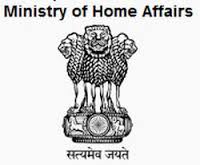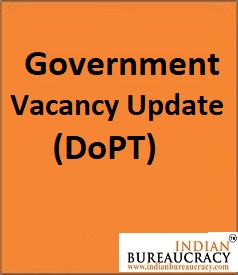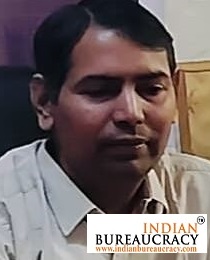The eighth edition of the Delhi Dialogue on the theme ‘ASEAN-India Relations: A New Paradigm’ got under way here with Mr. Anil Wadhwa, Secretary (East), Ministry of External Affairs, Government of India, giving a clarion call to those ASEAN member states who had not ratified the ASEAN-India
Agreements on Trade in Services and Investments to endorse the pacts entered into last year. The Delhi Dialogue is organized jointly by the Ministry of External Affairs, Government of India, the Federation of Indian Chambers of Commerce and Industry (FICCI) and Institute of Defence Studies and Analyses and supported by other business associations including Confederation of Indian Industry (CII), ASSOCHAM, ICC and AIAI. Mr. Anil Wadhwa said, “So far India, Brunei Darussalam, Malaysia, Myanmar, Singapore, Vietnam and Thailand have ratified the agreements. Lao PDR has ratified the Agreement on Trade in Services which came into force on 15 September 2015. Ratification of Agreement on Trade in Investment for Lao PDR, ratification of Agreements on Trade in Services and Investment by Cambodia, Philippines and Indonesia is awaited. Furthermore, the ASEAN-India Trade Negotiating Committee has been tasked to undertake a review of the ASEAN-India Trade in Goods Agreement, which came into effect on 1 January 2010, to optimize utilization.”
He said that enhancing India-ASEAN trade is a priority area under the new Plan of Action to implement the ASEANIndia partnership for peace progress and shared prosperity (2016-20). The Plan of Action envisages a number of steps in the areas of Trade and Investment, Finance, Transport, Food, Agriculture, Forestry, Information and Communication Technology, Tourism, Science, Technology and Innovation, and Mining and Natural Resources Management. Mr. Wadhawa noted that negotiations on the Regional Comprehensive Economic Partnership (RCEP) have moved satisfactorily, with modalities being agreed in August 2015. “If the technical negotiations, which are under way, are completed swiftly, RCEP may turn into a dynamic reality very soon, particularly if we simultaneously succeed in forming regional value chains and production networks.
With the TPP becoming a reality, expediting RCEP is in our interest,” he pointed out. The Secretary said that in order to fully utilize the potential offered by the ASEAN-India Free Trade Area, there is a need to focus on building complementarities which can generate the necessary goodwill and trust. “Our government is keen to facilitate cross border trade between our North Eastern States and neighbouring ASEAN countries by setting up more border trade points and border ‘haats’. Under the MOU on Border ‘Haats’ along the India-Myanmar border signed in 2012, it has been agreed to set up 9 ‘Haats’ or markets in the states of Arunachal Pradesh, Nagaland, Manipur and Mizoram. We have two Lands Customs Stations at Tamu-Moreh in Manipur and RhiZowkhathar in Mizoram, and the Land Customs Station at Moreh is being upgraded into an Integrated Check Post,” Mr. Wadhwa observed. On the programme ‘Start-up India, Stand-up India’, he said the Government of India has announced a 19-point action plan in January this year for setting up of Start-ups which would work towards innovation, development, deployment or commercialization of new products, processes or services that are driven by technology or intellectual property.
He hoped that the Dialogue would come up with the broad contours of an ASEAN-India ecosystem to facilitate the convergence of technology, integration across diverse fields, distributed architecture and people willing to back an idea. Dr. Jyotsna Suri, Immediate Past President, FICCI, in her remarks, observed that an enabling environment has been created for by the new ASEAN-India Plan of Action for 2016-20 and the establishment of the ASEAN Economic Community (AEC). A balanced and ambitious Regional Comprehensive Economic Partnership or RCEP, which would hopefully conclude this year, will open common doors to the Asia Pacific as well. “There are great opportunities for investment as well as trade expansion and diversification. However, we are restrained because of poor connectivity. We need to improve our connectivity via Land, Air and Sea so as to facilitate trade, business travel and tourism. We share a rich heritage of Buddhist pilgrimage sites which can ensure a tremendous boost to tourism, she emphasised. Mr. Sumit Mazumder, President, CII, said that the India’s bilateral trade with ASEAN has been increasing from $44 billion in 2009-10 to around US$77 billion in 2014-15 – thanks largely to the India-ASEAN FTA. India and ASEAN need to take advantage of the opportunities created by the India-ASEAN FTA in Services and Investments.
They can promote cross border investments by linking investment promotion agencies, foreign investors and local entrepreneurs. Governments, industry bodies and relevant agencies can promote dissemination of information on investment rules, regulations and policies related to investment in ASEAN and India. In addition, Indian companies can seek to connect with ASEAN’s well-developed Regional Value Chains (RVC). Mr. Sunil Kanoria, President, ASSOCHAM, pointed out that in agriculture and other primary sectors, we need a better dialogue between all stakeholders. Both ASEAN and India have a young population. To reap this demographic dividend, it is imperative to forge partnerships at the institutional levels for various disciplines like finance, R&D, education, healthcare, legal, ITeS, tourism, etc. A specific idea is to encourage the top business schools of India to meet with the top business schools of ASEAN in competitions and case studies. Another area of dialogue is around the shared challenge of climate change. As urbanization picks up in our two regions, we face the issues of air pollution and water pollution and carbon emissions. Mr. Shiv Siddhant Narayan Kaul, President, Indian Chamber of Commerce, suggested that to enhance trade ties, India and ASEAN should follow the principle of comparative advantage. India has an advantage in pharmaceuticals, gems and jewelry, and iron and steel, medical equipment while the ASEAN bloc has an advantage in natural resources and electronics. Proper economic integration would imply an optimum utilization of each other’s resources to boost production networks.
He said that in order to achieve full potential of the Indian-ASEAN relations, a willful and active participation of the member states, beneficial liberalization policies including tariff and non-tariff exemptions, private public partnership, infrastructural development, digitization, and identifying areas of comparative advantage and working towards capitalizing on the same is necessary.
Mr. Vijay Kalantri, President, All India Association of Industries, said that the Delhi Dialogue is an effective platform to enhance our trade and investment with ASEAN. However, “we need to organize more meetings and panel discussions on a regular basis with ASEAN to explore trade and investment opportunities.We are looking at the West. We should focus on ASEAN not only because of the close proximity in terms of distance but more so because of the global crisis – ASEAN is an area we should seriously work with together to promote trade,” he said. An impediment which has not allowed trade to grow is lack of infrastructure such as rail, road, air and marine connectivity, he said and suggested that with regard to FTAs there is a need to look more closely at them and explore areas such as Digital, Renewable Solar Energy and Manufacturing for cooperation. There is also a lot of scope for SMEs from ASEAN and India to cooperate for collaborations, he said.





